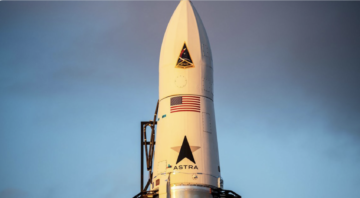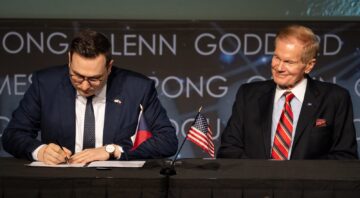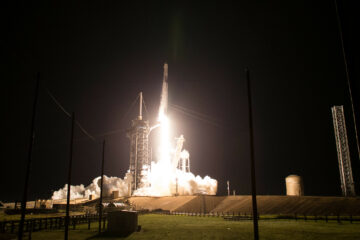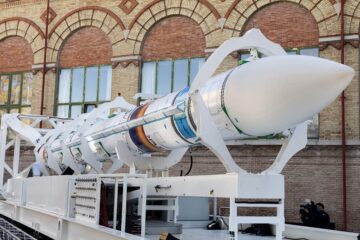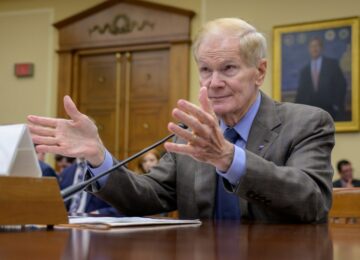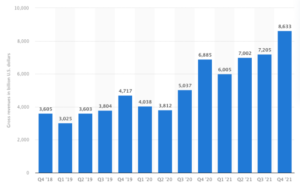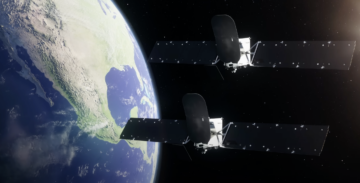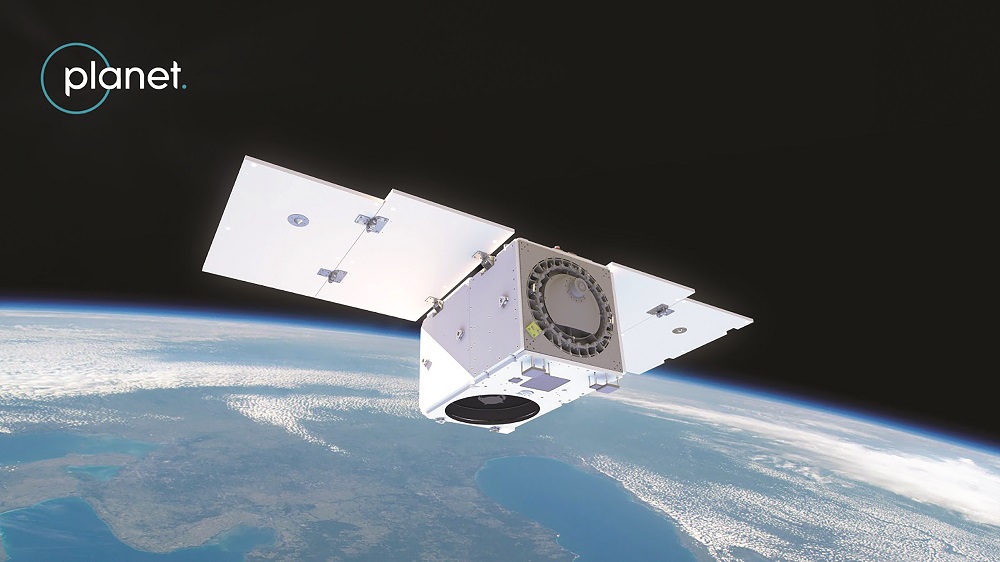
KIHEI, Hawaii — The Federal Communications Commission is requiring more operators of satellite constellations to work with astronomers to minimize the effects their satellites will have on ground-based astronomy.
The FCC issued authorizations Aug. 31 to Iceye and Planet, updating their licenses to add new satellites. Iceye, which operates a constellation of synthetic aperture radar imaging satellites, added eight satellites to its license, while Planet added seven of its upcoming Pelican high-resolution imaging satellites to its constellation.
Both licenses now include provisions requiring the companies to coordinate with the National Science Foundation (NSF) “to achieve a mutually acceptable agreement to mitigate the impact of its satellites… on optical ground-based astronomy.” The companies are required to report to the FCC annually whether they have reached a coordination agreement with the NSF and what steps they have taken to mitigate the effects of their satellites on astronomy, unless the NSF concludes they have no concerns about those spacecraft.
The NSF announced a similar coordination agreement with SpaceX in January to help reduce the impact of the Starlink constellation, including the larger V2 series of satellites, on astronomy. Such an agreement was a condition of the FCC’s license for the second-generation Starlink system, although NSF and SpaceX had voluntarily worked out that agreement before the FCC issued its license.
While the individual constellations of Iceye or Planet don’t pose risks to astronomy, given the small number of satellites compared to megaconstellations like Starlink, astronomers are concerned that large numbers of such constellations could, combined, interfere with astronomy.
“If we have a lot of smaller constellations, the aggregate amount could be a lot,” said Ashley Vanderley of the NSF’s Division of Astronomical Sciences during a Sept. 19 meeting of the Astronomy and Astrophysics Advisory Committee, where she discussed the Iceye and Planet coordination conditions in their FCC licenses.
“The FCC has done an excellent job of taking on our concerns,” she said, “and we’re thankful for that.”
The bulk of astronomers’ concerns, though, still revolve around large constellations. Those worries emerged four years ago with the launch of the first Starlink satellites, whose brightness raised alarms. Since then, astronomers have been working with SpaceX and other companies on ways to reduce the brightness of those satellites to minimize, although not entirely eliminate, their effect on astronomy.
“We do have a good back and forth with SpaceX,” said Vanderley, as that company has taken several steps to reduce the brightness of Starlink satellites, with the goal of having them no brighter than magnitude 7.
NSF is also working on coordination agreements with OneWeb and Amazon for their constellations. The OneWeb agreement is complete, she said, with a public announcement planned for the near future. NSF is in the “final stages of discussion” with Amazon on a coordination agreement for Kuiper, which she said should be announced this fall.
Amazon plans to test brightness mitigations with its first two prototype satellites, slated to launch in the first week of October on a United Launch Alliance Atlas 5. One satellite will be equipped with unspecified measures to reduce its brightness and the other will not in order to test how effective those measures are before launching more satellites.
“The large satellite companies have been working hard to mitigate,” Vanderley said, efforts she said would extend to future systems, like OneWeb’s planned second-generation constellation.
- SEO Powered Content & PR Distribution. Get Amplified Today.
- PlatoData.Network Vertical Generative Ai. Empower Yourself. Access Here.
- PlatoAiStream. Web3 Intelligence. Knowledge Amplified. Access Here.
- PlatoESG. Carbon, CleanTech, Energy, Environment, Solar, Waste Management. Access Here.
- PlatoHealth. Biotech and Clinical Trials Intelligence. Access Here.
- Source: https://spacenews.com/fcc-directing-more-satellite-constellations-to-mitigate-effects-on-astronomy/
- :has
- :is
- :not
- :where
- 19
- 31
- 7
- a
- About
- acceptable
- Achieve
- add
- advisory
- aggregate
- ago
- Agreement
- agreements
- Alliance
- also
- Although
- Amazon
- amount
- an
- and
- announced
- Announcement
- Annually
- ARE
- around
- AS
- astronomy
- astrophysics
- atlas
- Aug
- back
- BE
- been
- before
- brighter
- combined
- commission
- committee
- Communications
- Companies
- company
- compared
- complete
- concerned
- Concerns
- condition
- conditions
- coordinate
- coordination
- could
- directing
- discussed
- Division
- do
- done
- Dont
- during
- effect
- Effective
- effects
- efforts
- eight
- eliminate
- emerged
- entirely
- equipped
- excellent
- extend
- Fall
- FCC
- Federal
- Federal Communications Commission
- First
- For
- forth
- Foundation
- four
- future
- given
- goal
- good
- had
- Hard
- Have
- having
- hawaii
- help
- high-resolution
- How
- HTTPS
- Imaging
- Impact
- in
- include
- Including
- individual
- interfere
- Issued
- ITS
- Job
- large
- larger
- launch
- launching
- License
- licenses
- like
- Lot
- measures
- meeting
- minimize
- Mitigate
- more
- mutually
- National
- National Science
- Near
- New
- no
- now
- NSF
- number
- numbers
- october
- of
- on
- ONE
- operates
- operators
- optical
- or
- order
- Other
- our
- out
- planet
- planned
- plans
- plato
- Plato Data Intelligence
- PlatoData
- pose
- prototype
- public
- radar
- raised
- reached
- reduce
- report
- required
- risks
- Said
- satellite
- satellites
- Science
- Science Foundation
- SCIENCES
- sept
- Series
- seven
- several
- she
- should
- similar
- since
- small
- smaller
- spacecraft
- SpaceX
- stages
- starlink
- Steps
- Still
- such
- synthetic
- system
- Systems
- taken
- taking
- test
- than
- thankful
- that
- The
- their
- Them
- then
- they
- this
- those
- though?
- to
- two
- United
- upcoming
- updating
- voluntarily
- was
- ways
- we
- week
- What
- whether
- which
- while
- whose
- will
- with
- Work
- worked
- working
- would
- years
- zephyrnet


